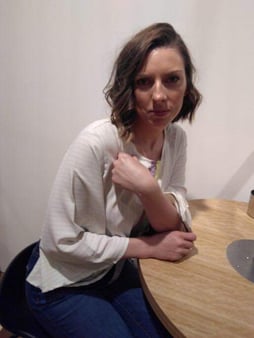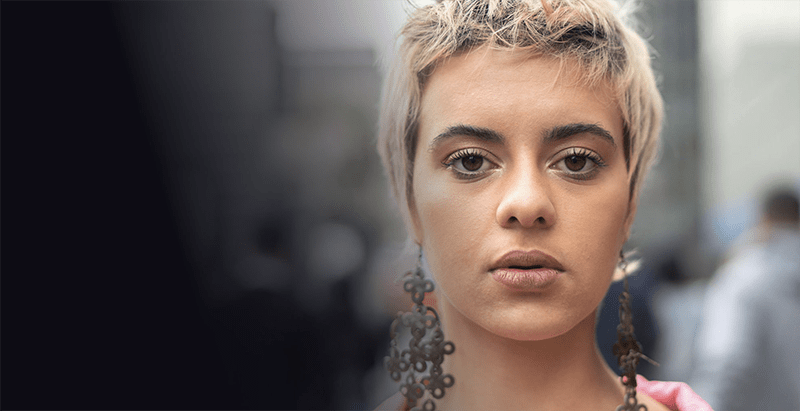Katie Horneshaw writes about mental illness, addiction and women’s issues for publications including Ten Daily, Whimm and Mamamia. She is also a member of AOD Media Watch, an organisation dedicated to calling out stigmatising attitudes within the Australian media. She recently agreed to become an ambassador for SMART Recovery Australia. Read what she had to say below…
Q: You’ve written extensively about how incarceration uniquely affects women. Has exposure to this system changed your beliefs or values?
Exposure to the justice system has absolutely changed my beliefs.
My sister, Anna Horneshaw, struggled with mental illness and addiction for years before she tragically took the life of her housemate and father figure in 2015. In the years leading up to Anna’s crime, my family and I tried everything we could to get my sister into involuntary residential care. Anna had been displaying increasingly self-destructive and violent behaviour, including assaulting her male housemates on several occasions, and we felt a profound sense that something terrible was about to happen if we didn’t get Anna somewhere safe and secure.
Each time Anna was hospitalised for an act of violence or self-harm, my family would beg the staff for help to get her into long term residential care. Anna herself even asked to be held involuntarily on a longer term basis on one such occasion. But each time we were told that the psych unit could not keep her any longer, and she was discharged to either an unsafe boarding house or the street.
One of the main reasons that Anna was unable to access treatment was her co-occurring mental illness and addiction. After languishing for months on a waiting list, Anna finally secured a place in a public residential rehab, only to be told that she was too mentally ill to attend. When my mother managed to secure Anna a place at one of Victoria’s only residential mental health programs, Anna was told she was too drug-dependent to be admitted. Thousands of Australians find themselves in this impossible limbo, unable to be treated for one of their problems due to the presence of the other. The current policy of arbitrarily separating AOD and mental health treatment is not working.
By the time Anna went to prison in 2015, my family and I had become extremely disillusioned with our mental health and AOD systems. I assumed I would feel the same way about the justice system. But I was surprised.
Dame Phyllis Frost Correction Centre provides a wrap-around model of care, and it works. The women are encouraged to work and study to fulfil their personal goals. Most live in self-contained, shared units where they do their own cooking and cleaning. They are medicated daily and supported by a network of prison officers and health workers.
In prison, the women are free from the constant threat of domestic violence; free from the never ending battle to feed a ravenous addiction. They don’t have to wonder where they will sleep, or how they will afford to eat. They feel safe and supported, and they get to be an important part of a bustling community.
What Anna’s prison sentence has taught me is this: with high level, round the clock, co-habiting residential care, women like my sister, with mental illness and addiction issues, can thrive. And many do.
 Q: What is the best way for Australia to tackle addiction and mental health in the community moving forward?
Q: What is the best way for Australia to tackle addiction and mental health in the community moving forward?
I believe we must replicate the prison model of care, within the health system. Women deserve access to proper residential care before they wind up in jail.
In my opinion the prison model of care works for four main reasons:
- It provides women with a safe and regulated environment where they are free of the daily threats and struggles they face on the outside. This allows the women to focus all their energy on learning to lead robust and healthy lives.
- It frees women from constant stigma and disenfranchisement, allowing them to rebuild their self-esteem.
- It frees women from isolation and loneliness and gives them the chance to be an important part of a community, which is a fundamental human need.
- Finally, and most importantly, this wrap-around model of care doesn’t merely treat one aspect of a woman’s life (ie. the addiction) but instead recognises that when someone has addiction and mental health issues, every single aspect of their existence is impacted. In order to have the right mind-set to be able to engage with addiction and mental health treatment, women first need to be living healthy lives. The prison model of care provides women with the opportunity to lay the foundations for a robust, goal- oriented and community-based life. When these basic needs are being met, more focussed forms of treatment become viable options.
I believe we should build a network of long term, residential facilities which adhere to the wrap-around model of care. These facilities should focus on providing residents with a community and a robust lifestyle, and be designed to treat both mental illness and addiction.
How do we pay for it? We stop spending money on criminalising addiction and imprisoning people, and instead invest in residential facilities and comprehensive social support services. The Netherlands has done just that, and they have seen a huge drop in prison rates and an enormous improvement in mental health outcomes. In Portugal, the decriminalisation of drug use has lead to improvements in addiction rates, a fall in overdose deaths, and a massive drop in HIV and hepatitis C levels.
This money would be an investment in the health of our citizens, and it will pay off in higher productivity and lower law enforcement costs.
Finally, I believe we should invest in education campaigns to help reduce stigma toward people with addictions, and to facilitate community support for harm reduction policies.
Q: What is it about SMART Recovery that you admire or align with?
The SMART recovery model aligns perfectly with my own principles on addiction.
I feel strongly that addiction recovery should focus on the addictive behaviour, not the substance itself. I believe that focussing on a person’s substance of choice is stigmatising, because it forever identifies that person with a certain drug. For the same reason, I don’t believe people should have to label themselves as “addict” for the rest of their lives. They deserve to move on from their substance if they so choose, and focus on just being themselves.
I believe that people are strong enough to manage their own recoveries, and that this process can be empowering. I also am a firm believer in CBT and mindfulness as techniques to manage compulsive behaviour: I’ve employed both in my own self-management of OCD and eating disorders.
Finally, and perhaps most importantly, I support SMART’s adherence to harm reduction principles. Recovery looks different to every person: if abstinence is what works for you, you should be empowered to work towards it. Or, if you simply want to reduce the harms that stem from your drug use, but don’t want to stop using, you should have access to a program that aids you in that goal.
I therefore deeply appreciate SMART’s policy of encouraging each person to set their own recovery goals. Harm reduction is about saying to the participant: “We do not make any moral judgement of addiction itself. We are simply here to help you reach a place which is workable for you, whatever that looks like to you.”
SMART gets harm reduction right.
Q: How do you see yourself assisting SMART Recovery as an ambassador – what does success look like to you in this role?
I would like to help reduce stigma toward people who use drugs by providing accessible education. This might mean interviewing people who have lived experience with addiction for articles; it might mean public speaking about my family’s experiences; or it might mean encouraging people who are living functional lives while using drugs to share their stories publicly. One of the best ways to reduce stigma is to encourage people who have personal experience with drugs to speak out: this helps to combat stereotypical notions of what a “typical drug user” looks like.
Stigma is one of the main barriers to help-seeking. If we want more people to engage with recovery programs like SMART in an open and honest way, we must work to reduce stigma so they feel safe and supported in this endeavour. The last thing people in recovery need is the constant fear that a boss or family member might “find out” that they have used drugs and disassociate from them.
I would also like to educate young people on the merits of harm reduction, and campaign for the decriminalisation of drugs in Australia.
Q: You and your mother recently wrote a story about an eleven-year-old boy who swaps brains with his dog. If you could swap brains with any animal, which would it be?
If I could swap brains with any animal, I’d probably choose a species with really strong community bonds, like a dolphin.
We have a chronic loneliness problem in Australia- we are a social animal and are designed to be living in extremely close-knit groups. In the distant past, that was the only way a human could survive. These days, we’ve made technological advances that mean people no longer need to be in contact with each other to survive. But our brains don’t know that; they have the exact same structure as they did in hunter-gatherer times; and that’s why isolation feels so unbearable. Our brains literally think we are going to die without company, so they flood us with distress signals. I think this is one of the main reasons that we’re seeing so much addictive behaviour. People are using anything they can to cope with this void that has been left by our loss of human connection.
So I would swap brains with a dolphin, and my dolphin-brained self could teach those around me to live in a community, and to form strong social bonds. Plus I’d be really clever and kind and playful, and just generally awesome.
You can read more from Katie Horneshaw here: https://www.news.com.au/lifestyle/health/mind/my-sister-never-should-have-been-allowed-to-kill/news-story/dd153d7c795d7d5ac020810dcee39943


